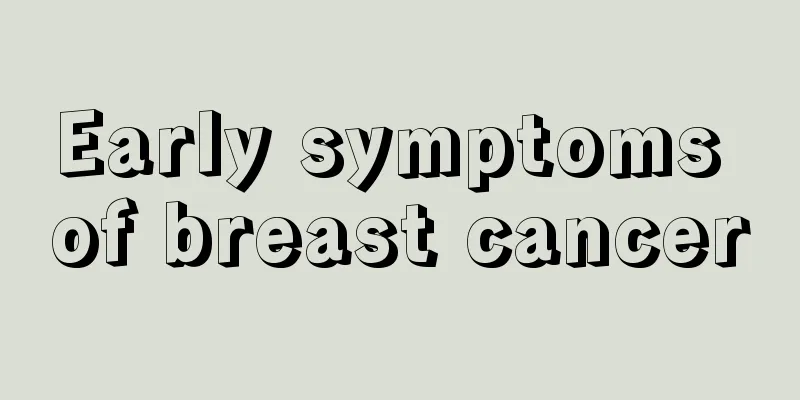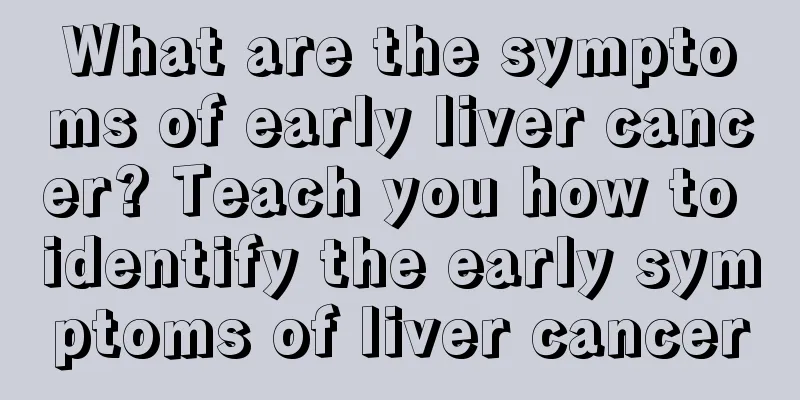Early symptoms of breast cancer

|
There are no obvious early symptoms of breast cancer. As the disease progresses, some precursor symptoms may appear, and you need to be vigilant. The specific situations are as follows: 1. Breast lumps: accidentally discovered, manifested as breast tumors and nodules, you need to be vigilant and go to the hospital as soon as possible; 2. Nipple discharge: especially blood discharge, you need to be vigilant and go to the hospital as soon as possible for further examination to rule out breast cancer; 3. Breast pain: Some early breast cancer patients may experience breast pain and discomfort, especially those with breast hyperplasia or other benign diseases. If you still have breast pain after menopause, you should be vigilant and seek medical attention as soon as possible. What are the types of breast cancer? The pathological classification of breast cancer is relatively complex and is usually divided into the following types: 1. Non-permeable breast cancer: including lobular carcinoma in situ and ductal carcinoma in situ; 2. Early permeable breast cancer: including early permeable lobular carcinoma and early permeable ductal carcinoma, among which early permeable ductal carcinoma is more common in breast cancer; 3. Permeable breast cancer: including permeable non-specific breast cancer and permeable specific breast cancer. Permeable non-specific breast cancer includes permeable lobular carcinoma and permeable ductal carcinoma. Special breast cancer includes medullary carcinoma, mucinous adenocarcinoma, apocrine carcinoma, etc.; 4. Other rare breast cancers: such as inflammatory breast cancer and Paget's disease. Treatment options for breast cancer Treatments for breast cancer include surgical resection, chemotherapy, radiotherapy, endocrine therapy and targeted therapy. The specific methods are as follows: 1. Surgical treatment: Consider whether the tumor is completely removed according to the pathological stage, pathological type and molecular classification; 2. Chemotherapy: preoperative chemotherapy is called new adjuvant chemotherapy, postoperative chemotherapy is called adjuvant chemotherapy, and advanced patients are called palliative chemotherapy; 3. Targeted therapy: Gene immunohistochemistry method to detect more than 3 HER2s, or FISH method to detect HER2 expansion positive; 4. Radiotherapy: Use high-energy X-ray local breast radiation and lymphatic drainage area; 5. Endocrine therapy commonly uses tamoxifen and letrozole. |
<<: How long can one live with advanced bone cancer
>>: How much does it cost to cure nasopharyngeal cancer
Recommend
The best hospital for colon cancer treatment
In our daily life, we are not unfamiliar with col...
Who are the high-risk groups for liver cancer? These 4 types of people are the high-risk groups for liver cancer
Liver cancer is a common disease in my country, a...
What are the causes of numbness in the back of the head?
Numbness at the back of the head is not a disease...
Protruding blood vessels on the back of the hand means heart problems
Blood vessels are an important part of the human ...
How long is the appropriate time to steam in a sauna
The history of sauna is very long, and it mainly ...
What are the symptoms of a cold
Generally speaking, when people show the slightes...
Does Luo Han Guo lower blood sugar? What other functions does it have?
In fact, as a common edible medicinal plant, monk...
Pure natural liquid foundation
Liquid foundation is a kind of cosmetic that is a...
Paroxysmal sinus tachycardia, prevention is the key
Paroxysmal sinus tachycardia is a non-sustained d...
How long can you live with advanced lung cancer
Advanced lung cancer means that cancer cells have...
Anti-slip cover for glasses
When summer comes, friends who wear glasses may h...
What is mite allergy?
Mites are a common organism in our daily life. Th...
How to make homemade yogurt thick_
Yogurt not only tastes delicious, but is also ver...
How long can you live with cervical cancer in the middle and late stages?
Cervical cancer is the most common malignant tumo...
Clinical manifestations of early nasopharyngeal tumors
The early clinical manifestations of nasopharynge...









